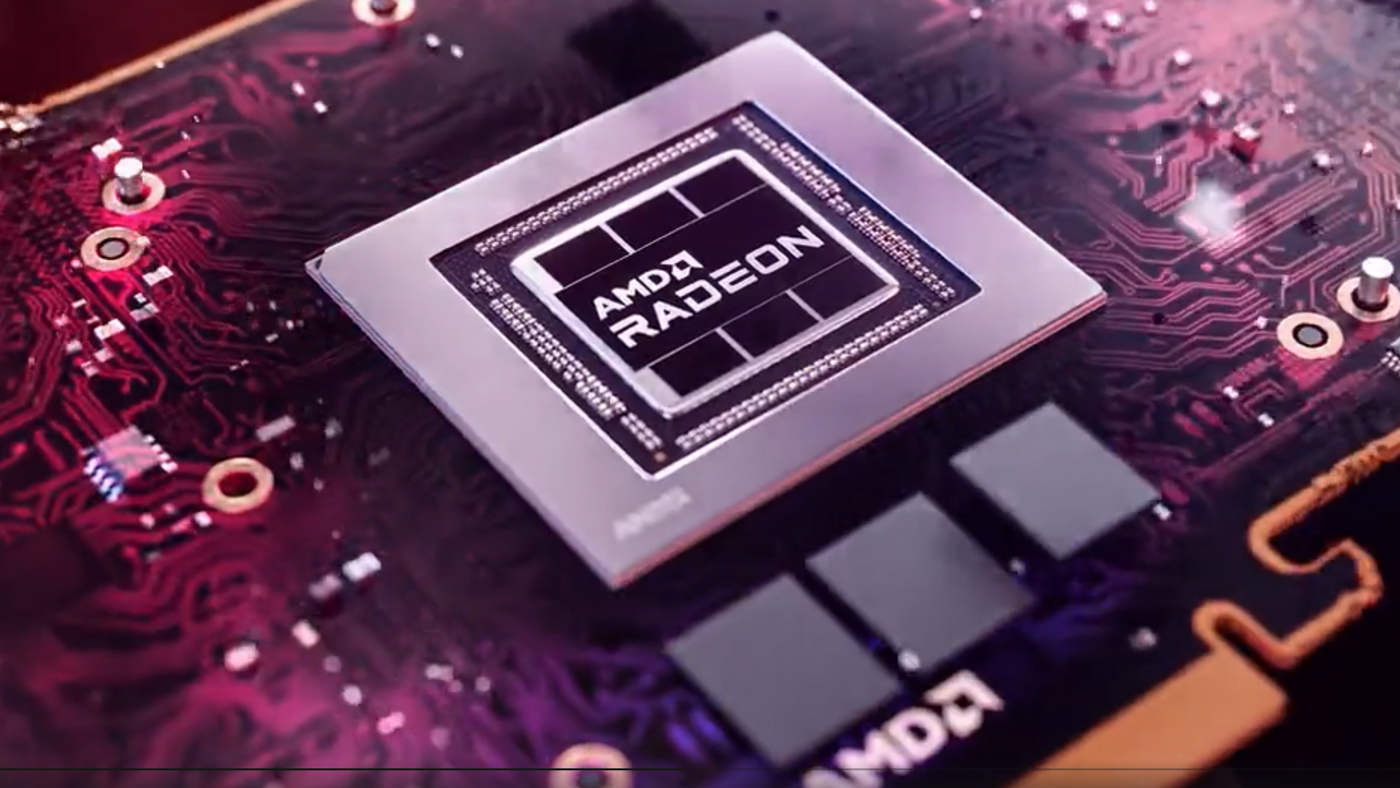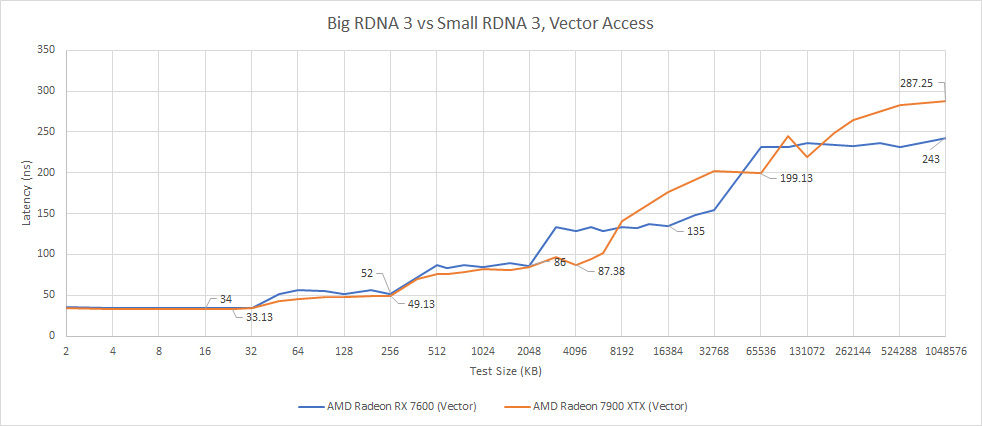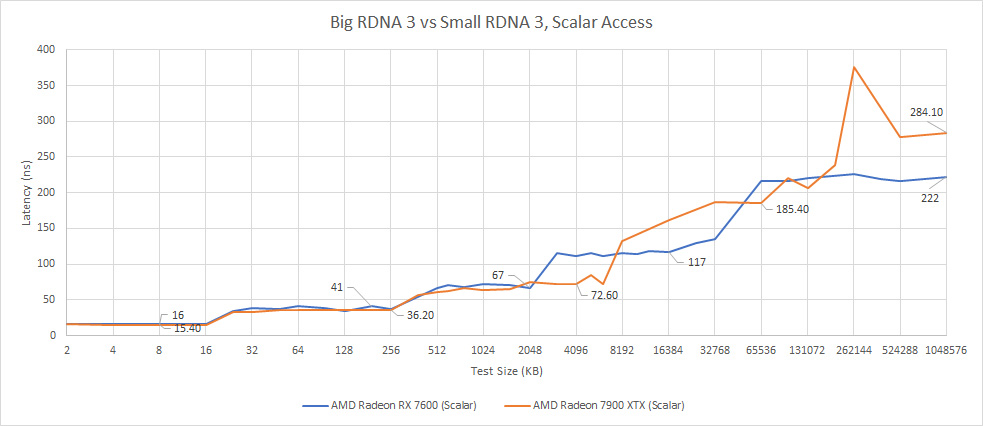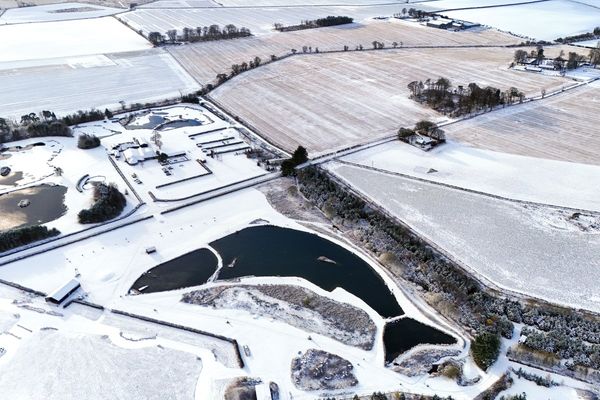
Chips and Cheese published an in-depth review of the new AMD Radeon RX 7600, highlighting the chip's strengths and weaknesses at an architectural level. Despite its often mediocre performance, there are some positive characteristics of the RX 7600. Specifically, it has superior cache and memory latency performance compared to its much more potent RX 7900-series counterparts.
The RX 7600's behavior stems from the way AMD manufactures the RX 7600. Instead of utilizing a chiplet-based design, which AMD heavily promoted for the RX 7900-series, Navi 33 uses a traditional monolithic design — a single chip. This combined with its much smaller die give it superior memory latency over its bigger GPU counterparts.
According to tests conducted by Chips and Cheese, the RX 7950 XTX takes up to 58% longer to retrieve data from its Infinity Cache compared to the RX 7600. This behavior extends to the GDDR6 VRAM as well, giving the RX 7600 a 15% lower VRAM latency compared to the RX 7900 XTX.


That's a significant difference, though ultimately it all boils down to real-world performance. Larger caches mean fewer VRAM accesses, and it's possible to hide higher latency with other techniques like data pre-fetching.
It's still an interesting look at how two GPUs within the same generation stack up at a low level. The RX 7600 shows how AMD opted for higher latency cache and memory access with the chiplet variants of the RDNA 3 architecture. It would have been more expensive to go the monolithic die route, though it would have been interesting to see what that would have done for performance.
Some of the latency advantage for the RX 7600 comes from AMD's cost-optimized design. The RX 7600's Navi 33 die is significantly smaller than the Navi 31 die used in the RX 7900 XT and XTX, so it wouldn't have made sense to use a multi-chiplet approach on Navi 33. Instead, AMD kept Navi 33 on TSMC's N6 node rather than moving to the latest N5 process. It also cut down the PCIe interface to x8 rather than the full x16, also saving on die area.
None of this changes the fact that the RX 7600 is a rather unexciting GPU, with underwhelming performance for the price you have to pay. On the bright side, at least the RX 7600 shows us what a more streamlined RDNA 3 GPU looks like with the advantages offered by a monolithic design.
We can't say how much faster a theoretical RX 7900 XTX would be with a monolithic die, especially since some of the latency improvements can be attributed to the RX 7600's smaller die size overall. However, it would certainly have made some difference with a latency gap as wide as 45%.







